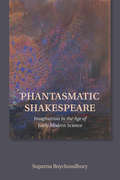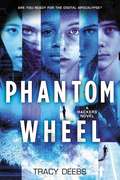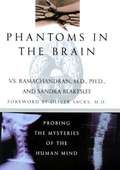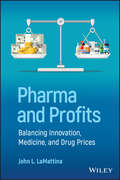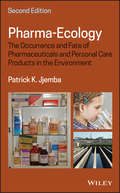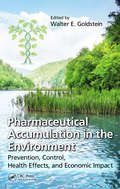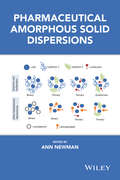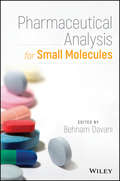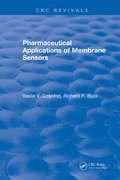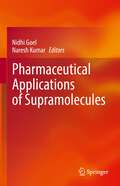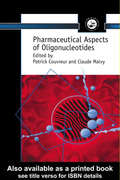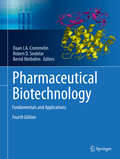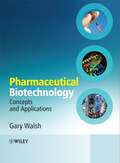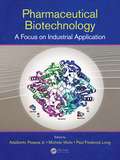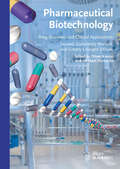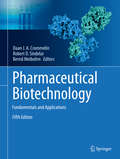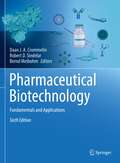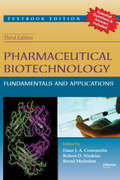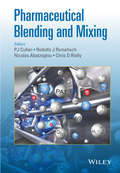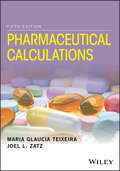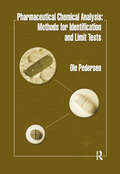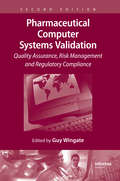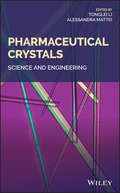- Table View
- List View
Phantasmatic Shakespeare: Imagination in the Age of Early Modern Science
by Suparna RoychoudhuryRepresentations of the mind have a central place in Shakespeare’s artistic imagination, as we see in Bottom struggling to articulate his dream, Macbeth reaching for a dagger that is not there, and Prospero humbling his enemies with spectacular illusions. Phantasmatic Shakespeare examines the intersection between early modern literature and early modern understandings of the mind’s ability to perceive and imagine. Suparna Roychoudhury argues that Shakespeare’s portrayal of the imagination participates in sixteenth-century psychological discourse and reflects also how fields of anatomy, medicine, mathematics, and natural history jolted and reshaped conceptions of mentality. Although the new sciences did not displace the older psychology of phantasms, they inflected how Renaissance natural philosophers and physicians thought and wrote about the brain’s image-making faculty. The many hallucinations, illusions, and dreams scattered throughout Shakespeare’s works exploit this epistemological ferment, deriving their complexity from the ambiguities raised by early modern science.Phantasmatic Shakespeare considers aspects of imagination that were destabilized during Shakespeare’s period—its place in the brain; its legitimacy as a form of knowledge; its pathologies; its relation to matter, light, and nature—reading these in concert with canonical works such as King Lear, Macbeth, and The Tempest. Shakespeare, Roychoudhury shows, was influenced by paradigmatic epistemic shifts of his time, and he in turn demonstrated how the mysteries of cognition could be the subject of powerful art.
Phantom Wheel: A Hackers Novel
by Tracy DeebsThe digital apocalypse has arrived and the future is here in this addictive technological thriller full of twists and turns. Perfect for fans of Nerve! Being recruited by the CIA to join a top-secret intelligence program should be the opportunity of a lifetime. For Issa, it's a shot at creating a new and better life for herself and her siblings. For clever con artist Harper, it's a chance to bury the secrets of her troubled past and make sure that those secrets stay buried. But for Owen--honor student, star quarterback, and computer-hacking genius--it sounds like a trap. He's right. Owen discovers that instead of auditioning for the CIA, they've all been tricked by a multibillion-dollar tech company into creating the ultimate computer virus. It's called Phantom Wheel, and it's capable of hacking anyone on Earth, anywhere, at any time. And thanks to six teenagers, it's virtually unstoppable. Horrified by what they've done, the hackers must team up to stop the virus before the world descends into chaos. But working together is easier said than done, especially as the lines start to blur between teammate, friend, and more than friend. Because how do you learn to trust someone when you've spent your entire life exploiting that same trust in others?
Phantoms in the Brain: Probing the Mysteries of the Human Mind
by V. S. Ramachandran Sandra BlakesleeIn Phantoms in the Brain, Dr. Ramachandran recounts how his work with patients who have bizarre neurological disorders has shed new light on the deep architecture of the brain, and what these findings tell us about who we are, how we construct our body image, why we laugh or become depressed, why we may believe in God, how we make decisions, deceive ourselves and dream, perhaps even why we're so clever at philosophy, music and art.
Phantoms of the Prairie
by John W. LaundréLast seen in the 1880s, cougars (also known as pumas or mountain lions) are making a return to the plains regions of the Midwest. Their comeback, heralded by wildlife enthusiasts, has brought concern and questions to many. Will the people of the region make room for cougars? Can they survive the highly altered landscape of the Midwest? Is there a future for these intrepid pioneers if they head even farther east? Â Â Â Using GIS technology, and historical data, among many other methods, Phantoms of the Prairie takes readers on a virtual journey, showing how the cougar might move over the landscape with minimal human contact. Drawing on his years of research on cougars, John W. Laundré offers an overview of what has been, what is, and what might be regarding the return of cougars to their ancestral prairie homeland.
Pharma and Profits: Balancing Innovation, Medicine, and Drug Prices
by John L. LaMattinaHigh-level commentary on various facets of the pharmaceutical industry from a key leader in the field This book clearly explains the value that the pharmaceutical industry offers to society which is often underreported against the more negative topic of high drug prices. It also offers an overview for drug discovery and development professionals, highlighting the challenges that such drug hunters should be aware of when developing new drugs. Case studies to illustrate topics like hepatitis C, mRNA vaccines, insulin, and price controls are included to aid in seamless reader comprehension. Written by John LaMattina, former president of Pfizer Global Research and Development and well-known speaker and writer for the pharma industry, sample topics covered and questions explored within the work include: Fiscal consequences of curing hepatitis C mRNA vaccines and the race for a cure Why the government does not deserve a piece of Biopharma’s profits Paying for drugs whose ultimate value is unknown The impact of reduced revenues on R&DThis book is a must-read for biopharmaceutical professionals and executives who wish to gain high-level insight into key challenges that must be first understood, then overcome, within the pharmaceutical industry.
Pharma-Ecology: The Occurrence and Fate of Pharmaceuticals and Personal Care Products in the Environment
by Patrick K. JjembaThe revised edition of the guide to environmental impact of pharmaceuticals and personal care products The revised and updated second edition of Pharma-Ecology joins the health and environmental sciences professions' concern over the occurrence and fate of pharmaceutical and personal care products (PPCPs) in the environment and explores how to best minimize their impact. The text highlights the biological effects of various classes of pharmaceutical compounds under clinical settings, their modes of action, and approximate quantities consumed. The second edition contains the most recent knowledge about the ecological impact of PPCPs as more sensitive detection techniques have become available, since the book was first published. The second edition offers the most up-to-date information on pharma ecology and bridges the gap between medicine, public health, and environmental science. This new edition contains helpful learning objectives for each chapter, as well as a brief section at the end of each chapter that presents a set of open ended questions. This vital resource: • Explores the biological effects of pharmaceutical compounds under clinical settings, their modes of action, approximate quantities consumed • Provides researchers and scientists with critical background data on the environmental impacts of PPCPs • Contains the most current information on PPCPs' ecological impacts, based on new detection techniques • Bridges the gap between medicine, public health, and environmental science Written for ecologists, engineers, microbiologists, pharmacists, toxicologists, chemists, physicians, and veterinarians involved in pollution and environmental analysis, the second edition of Pharma-Ecology contains the most current information available on the environmental impact of pharmaceuticals and personal care products.
Pharmaceutical Accumulation in the Environment: Prevention, Control, Health Effects, and Economic Impact
by Walter E. GoldsteinA Proactive Approach to Improving and Protecting the EnvironmentThe accumulation of pharmaceuticals in the environment is a growing concern, the magnitude of which has not been determined, yet cannot be ignored. Touting the benefits of research and discovery as it relates to a pharmaceutical presence in the environment, Pharmaceutical Accumulation
Pharmaceutical Amorphous Solid Dispersions
by Ann NewmanProviding a roadmap from early to late stages of drug development, this book overviews amorphous solid dispersion technology - a leading platform to deliver poorly water soluble drugs, a major hurdle in today's pharmaceutical industry. * Helps readers understand amorphous solid dispersions and apply techniques to particular pharmaceutical systems * Covers physical and chemical properties, screening, scale-up, formulation, drug product manufacture, intellectual property, and regulatory considerations * Has an appendix with structure and property information for polymers commonly used in drug development and with marketed drugs developed using the amorphous sold dispersion approach * Addresses global regulatory issues including USA regulations, ICH guidelines, and patent concerns around the world
Pharmaceutical Analysis for Small Molecules
by Behnam DavaniA comprehensive introduction for scientists engaged in new drug development, analysis, and approvals Each year the pharmaceutical industry worldwide recruits thousands of recent science graduates—especially chemistry, analytical chemistry, pharmacy, and pharmaceutical majors—into its ranks. However, because of their limited background in pharmaceutical analysis most of those new recruits find making the transition from academia to industry very difficult. Designed to assist both recent graduates, as well as experienced chemists or scientists with limited regulatory, compendial or pharmaceutical analysis background, make that transition, Pharmaceutical Analysis for Small Molecules is a concise, yet comprehensive introduction to the drug development process and analysis of chemically synthesized, small molecule drugs. It features contributions by distinguished experts in the field, including editor and author, Dr. Behnam Davani, an analytical chemist with decades of technical management and teaching experience in compendial, regulatory, and industry. This book provides an introduction to pharmaceutical analysis for small molecules (non-biologics) using commonly used techniques for drug characterization and performance tests. The driving force for industry to perform pharmaceutical analyses is submission of such data and supporting documents to regulatory bodies for drug approval in order to market their products. In addition, related required supporting studies including good laboratory/documentation practices including analytical instrument qualification are highlighted in this book. Topics covered include: Drug Approval Process and Regulatory Requirements (private standards) Pharmacopeias and Compendial Approval Process (public standards) Common methods in pharmaceutical analysis (typically compendial) Common Calculations for assays and impurities and other specific tests Analytical Method Validation, Verification, Transfer Specifications including how to handle out of specification (OOS) and out of trend (OOT) Impurities including organic, inorganic, residual solvents and elemental impurities Good Documentation Practices for regulatory environment Management of Analytical Laboratories Analytical Instrument Qualifications including IQ, OQ, PQ and VQ Due to global nature of pharmaceutical industry, other topics on both regulatory (ICH) and Compendial harmonization are also highlighted. Pharmaceutical Analysis for Small Molecules is a valuable working resource for scientists directly or indirectly involved with the drug development process, including analytical chemists, pharmaceutical scientists, pharmacists, and quality control/quality assurance professionals. It also is an excellent text/reference for graduate students in analytical chemistry, pharmacy, pharmaceutical and regulatory sciences.
Pharmaceutical Applications of Membrane Sensors
by Vasile V. CosofretA one-of-a-kind book discussing drug-membrane sensors in pharmaceutical analysisPharmaceutical Applications of Membrane Sensors is the first book to deal with the theory of drug-membrane sensors, as well as applications of such devices in pharmaceutical analysis. The book contains three main parts. The three major sections of the book cover the design and principles of membrane drug sensors, the use of membrane sensors in the analysis of pharmaceuticals, and various aspects of drug release monitoring by membrane sensors. Detailed analytical methods for more than 400 organic pharmaceuticals assayed by membrane sensor techniques are presented.Pharmaceutical Applications of Membrane Sensors will be a valuable reference for specialists in analytical and pharmaceutical chemistry, electroanalytical chemistry, medicine, pharmaceutical sciences, and pharmacology.
Pharmaceutical Applications of Supramolecules
by Naresh Kumar Nidhi GoelThis book outlines the use of supramolecules as different pharmaceutical drugs. Supramolecular chemistry in pharmaceutical sciences is quite a young and rapidly developing field. Supramolecular assemblies might offer an alternative for existing pharmaceutical formulations, as they facilitate the improvement of physicochemical and pharmacological properties i.e., higher bioavailability, better biocompatibility and drug-targeting, fewer multidrug-resistances. This book offers an overview of the recent advances in supramolecular structures and discusses the future aspects and challenges related to the development of these molecules, providing also a perspective on how to overcome these issues. Divided into 13 chapters contributed by experts in their field, the book provides a deeper understanding of intermolecular forces playing pivotal roles in mediating the interactions between chemical molecules and biological systems by focusing on different applications of supramolecular compounds. In this book, readers will find valuable insights into the preparation of supramolecules and the latest research and development trends of supramolecules as anticancer drugs, including liquid-crystalline supramolecular assemblies, and as antimicrobial, antiviral, anti-inflammatory and cardiovascular drugs. Particular attention is given to the application of supramolecules in the fields of biomedicine, bioimaging, and vaccine development. Given its breadth, this book will appeal to a wide readership from researchers and students interested in these fields to professionals in the pharma industry.
Pharmaceutical Aspects of Oligonucleotides
by Patrick CouvreurOligonucleotides diffuse poorly through biological barriers, including cell membranes. They are also rapidly degraded in vivo by nucleuses. Aiming to improve the administration of compounds, the book studies the development of nucleotide chemistry.
Pharmaceutical Biotechnology
by Bernd Meibohm Daan J. A. Crommelin Robert D. SindelarThis introductory text explains both the basic science and the applications of biotechnology-derived pharmaceuticals, with special emphasis on their clinical use. It serves as a complete one-stop source for undergraduate/graduate pharmacists, pharmaceutical science students, and for those in the pharmaceutical industry The Fourth Edition will completely update the previous edition, and will also include additional coverage on the newer approaches such as oligonucleotides, siRNA, gene therapy and nanotech.
Pharmaceutical Biotechnology
by Gary WalshPharmaceutical Biotechnology offers students taking Pharmacy and related Medical and Pharmaceutical courses a comprehensive introduction to the fast-moving area of biopharmaceuticals. With a particular focus on the subject taken from a pharmaceutical perspective, initial chapters offer a broad introduction to protein science and recombinant DNA technology- key areas that underpin the whole subject. Subsequent chapters focus upon the development, production and analysis of these substances. Finally the book moves on to explore the science, biotechnology and medical applications of specific biotech products categories. These include not only protein-based substances but also nucleic acid and cell-based products. introduces essential principles underlining modern biotechnology- recombinant DNA technology and protein sciencean invaluable introduction to this fast-moving subject aimed specifically at pharmacy and medical studentsincludes specific 'product category chapters' focusing on the pharmaceutical, medical and therapeutic properties of numerous biopharmaceutical products.entire chapter devoted to the principles of genetic engineering and how these drugs are developed.includes numerous relevant case studies to enhance student understandingno prior knowledge of protein structure is assumed
Pharmaceutical Biotechnology: A Focus on Industrial Application
by Paul Frederick Long Adalberto Pessoa Jr., Michele VitoloPharmaceutical Biotechnology: A Focus on Industrial Application covers the development of new biopharmaceuticals as well as the improvement of those being produced. The main purpose is to provide background and concepts related to pharmaceutical biotechnology, together with an industrial perspective. This is a comprehensive text for undergraduates, graduates and academics in biochemistry, pharmacology and biopharmaceutics, as well as professionals working on the interdisciplinary field of pharmaceutical biotechnology. Written with educators in mind, this book provides teachers with background material to enhance their classes and offers students and other readers an easy-to-read text that examines the step-by-step stages of the development of new biopharmaceuticals. Features: Discusses specific points of great current relevance in relation to new processes as well as traditional processes Addresses the main unitary operations used in the biopharmaceutical industry such as upstream and downstream Includes chapters that allow a broad evaluation of the production process Dr. Adalberto Pessoa Jr. is Full Professor at the School of Pharmaceutical Sciences of the University of São Paulo and Visiting Senior Professor at King’s College London. He has experience in enzyme and fermentation technology and in the purification processes of biotechnological products such as liquid–liquid extraction, cross-flow filtration and chromatography of interest to the pharmaceutical and food industries. Dr. Michele Vitolo is Full Professor at the School of Pharmaceutical Sciences of the University of São Paulo. He has experience in enzyme technology, in immobilization techniques (aiming the reuse of the biocatalyst) and in the operation of membrane reactors for obtaining biotechnological products of interest to the pharmaceutical, chemical and food industries. Dr. Paul F. Long is Professor of Biotechnology at King's College London and Visiting International Research Professor at the University of São Paulo. He is a microbiologist by training and his research uses a combination of bioinformatics, laboratory and field studies to discover new medicines from nature, particularly from the marine environment.
Pharmaceutical Biotechnology: Drug Discovery and Clinical Applications
by Heribert Warzecha Oliver KayserThis second edition of a very successful book is thoroughly updated with existing chapters completely rewritten while the content has more than doubled from 16 to 36 chapters. As with the first edition, the focus is on industrial pharmaceutical research, written by a team of industry experts from around the world, while quality and safety management, drug approval and regulation, patenting issues, and biotechnology fundamentals are also covered. In addition, this new edition now not only includes biotech drug development but also the use of biopharmaceuticals in diagnostics and vaccinations. With a foreword by Robert Langer, Kenneth J Germeshausen Professor of Chemical and Biomedical Engineering at MIT and member of the National Academy of Engineering and the National Academy of Sciences.
Pharmaceutical Biotechnology: Fundamentals And Applications (Pharmaceutical Biotechnology Ser. #7)
by Bernd Meibohm Daan J. A. Crommelin Robert D. SindelarThis introductory text explains both the basic science and the applications of biotechnology-derived pharmaceuticals, with special emphasis on their clinical use. It serves as a complete one-stop source for undergraduate/graduate pharmacists, pharmaceutical science students, and for those in the pharmaceutical industry. The Fifth Edition completely updates the previous edition, and also includes additional coverage on the newer approaches such as oligonucleotides, siRNA, gene therapy and nanotech and enzyme replacement therapy.
Pharmaceutical Biotechnology: Fundamentals and Applications
by Bernd Meibohm Daan J. A. Crommelin Robert D. SindelarThis introductory text explains both the basic science, production, quality, dosage forms, administration, economic and regulatory aspects and the clinical applications of biotechnology-derived pharmaceuticals. It serves as a complete one-stop source for undergraduate/graduate pharmacists and pharmaceutical science students. An additional important audience are pharmaceutical scientists in industry and academia, particularly those who have not received formal training in pharmaceutical biotechnology and are inexperienced in this field. The rapid growth and advances in the field made it necessary to revise this textbook in order to continue providing up-to-date information and introduce readers to cutting edge knowledge and technology of this field. This Sixth Edition completely updates the previous edition and includes additional coverage on new approaches such as oligonucleotides, siRNA, mRNA, gene therapy, cell therapies, monoclonal antibodies and vaccines. With more than 3-million-chapter downloads, the fifth edition of the textbook has achieved widespread distribution as a key educational resource for the field of pharmaceutical biotechnology.
Pharmaceutical Biotechnology: Fundamentals and Applications, Third Edition
by Bernd Meibohm Daan J. A. Crommelin Robert D. SindelarCompletely revised text that reflects to emergent trends and cutting-edge advances in pharmaceutical biotechnology, this Third Edition provides a well-balanced framework for understanding every major aspect of pharmaceutical biotechnology, including drug development, production, dosage forms, administration, and therapeutic developments. New chapte
Pharmaceutical Blending and Mixing
by P. J. Cullen Rodolfo Romañach Nicolas Abatzaglou Chris D. RiellyWritten in four parts, this book provides a dedicated and in-depth reference for blending within the pharmaceutical manufacturing industry. It links the science of blending with regulatory requirements associated with pharmaceutical manufacture. The contributors are a combination of leading academic and industrial experts, who provide an informed and industrially relevant perspective of the topic. This is an essential book for the pharmaceutical manufacturing industry, and related academic researchers in pharmaceutical science and chemical and mechanical engineering.
Pharmaceutical Calculations
by Maria Glaucia Teixeira Joel L. ZatzPharmacists are required to make certain kinds of calculations that determine the quantities of materials required for filling prescriptions and making up formulas. The new and expanded topics introduced in the fourth edition teach pharmacists and pharmacy students how to do the calculations required in current practice, covering important areas such as handling injectibles, including those used in parenteral nutrition and radiopharmaceuticals.The book also includes new chapters on isotonicity, intravenous fluids, and nutritional calculations.Features:* New concepts introduced in sequence, encouraging the student to master each concept before moving ahead* Many examples and practice problems, all with answers and the availability of rapid feedback build confidence* Filled with practical instruction relevant to the problems pharmacist face in their practice
Pharmaceutical Chemical Analysis: Methods for Identification and Limit Tests
by Ole PedersenComplete, referenced information in an easy-to-use formatMany of the monographs in the European Pharmacopiea, the industry standard test for certain groups of ingredients and excipients, do not describe the tests in full, but reference general methods based on test-tube chemistry. When a test fails, you need to know what went wrong, how it can be f
Pharmaceutical Coating Technology
by Graham Cole John Hogan Michael AultonThis book is the definitive work on the theory and practice of pharmaceutical tablet and pellet coating. It describes both the practical and theoretical aspects of tablet coating, including the equipment and methods used in laboratory development, scale-up and production systems, More...as well as automation and validation. This book also discusses
Pharmaceutical Computer Systems Validation: Quality Assurance, Risk Management and Regulatory Compliance
by Guy WingateThoroughly revised to include the latest industry developments, the Second Edition presents a comprehensive overview of computer validation and verification principles and how to put them into practice. To provide the current best practice and guidance on identifying and implementing improvements for computer systems, the text extensively reviews regulations of pharmaceuticals, healthcare products, blood processing, medical devices, clinical systems, and biotechnology. Ensuring that organizations transition smoothly to the new system, this guide explains how to implement the new GMP paradigm while maintaining continuity with current practices. In addition, all 24 case studies from the previous edition have been revised to reflect the new system.
Pharmaceutical Crystals: Science and Engineering
by Alessandra Mattei Tonglei LiAn important resource that puts the focus on understanding and handling of organic crystals in drug development Since a majority of pharmaceutical solid-state materials are organic crystals, their handling and processing are critical aspects of drug development. Pharmaceutical Crystals: Science and Engineering offers an introduction to and thorough coverage of organic crystals, and explores the essential role they play in drug development and manufacturing. Written contributions from leading researchers and practitioners in the field, this vital resource provides the fundamental knowledge and explains the connection between pharmaceutically relevant properties and the structure of a crystal. Comprehensive in scope, the text covers a range of topics including: crystallization, molecular interactions, polymorphism, analytical methods, processing, and chemical stability. The authors clearly show how to find solutions for pharmaceutical form selection and crystallization processes. Designed to be an accessible guide, this book represents a valuable resource for improving the drug development process of small drug molecules. This important text: Includes the most important aspects of solid-state organic chemistry and its role in drug development Offers solutions for pharmaceutical form selection and crystallization processes Contains a balance between the scientific fundamental and pharmaceutical applications Presents coverage of crystallography, molecular interactions, polymorphism, analytical methods, processing, and chemical stability Written for both practicing pharmaceutical scientists, engineers, and senior undergraduate and graduate students studying pharmaceutical solid-state materials, Pharmaceutical Crystals: Science and Engineering is a reference and textbook for understanding, producing, analyzing, and designing organic crystals which is an imperative skill to master for anyone working in the field.
